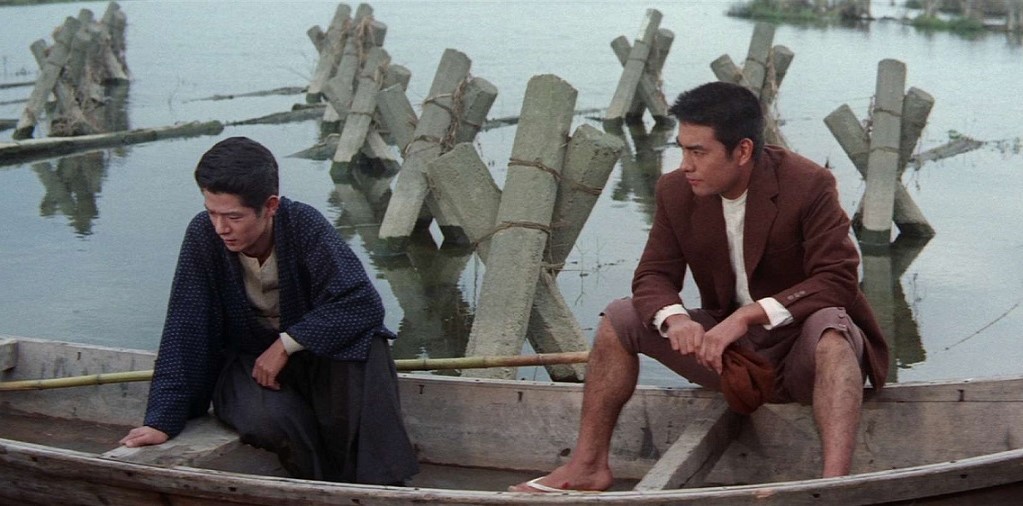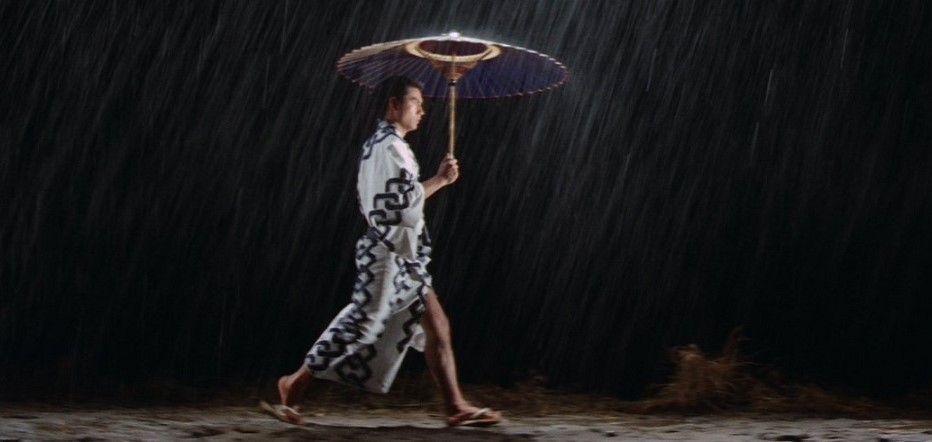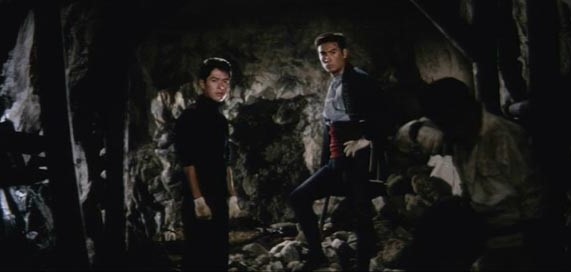This feature is currently available as a “Limited Edition” Blu-ray from Radiance Films.

While most North American cinephiles know the work of Japanese filmmakers Akira Kurosawa, Hayao Miyazaki and Ishiro Honda, in recent years several more directors have been gaining prominence. This is because many weren’t well known here, as their work was unavailable in this part of the world. Thankfully, this has slowly changed over the past few decades, with home video, DVD and Blu-ray releasing more and more titles. Radiance Films has been a big part of resurgence, and are now releasing a work from Seijun Suzuki, who has greatly risen in the view of critics.
Believe it or not, Suzuki was actually considered a B-movie studio filmmaker, but his creative and unique takes on familiar subjects have made a lasting impact. Retrospectives in recent years have been cementing his legacy. One of his notable features is Tattooed Life, a period Yakuza movie famous for its lighting and camera work during the climax. However, the whole feature is fascinating as well. It just so happens that the ending is so visually iconic that it tends to be what most viewers immediately recall. This new Blu-ray contains a high- definition transfer of the picture provided to the studio by the distributor, Nikkatsu Corporation.
The plot involves a Yakuza hitman named Tetsu (Hideki Takahashi). Despite being a criminal, he has a strong moral code and spends much of his time protecting his younger brother and artist Kenji (Kotobuki Hananomoto). When the inexperienced sibling ends up interfering in his brother’s killing of a mob boss, the pair go on the run to Manchuria. Before they can get there, they find themselves hiding out as laborers on a construction site. The work is miserable and as this is happening, younger Yakuza members are vying for power and influence on the transportation project. Soon, the two are embroiled once again in deadly confrontations with Yakuza members. Tetsu, who has been trying to lay low, is forced to go on a rampage.

While the story is fairly traditional, the picture does a nice job of focusing on the siblings and their relationship. There are also some interesting presentations of the Yakuza and the way they operate. A subplot involves older and more honor-bound members of the organization being brutally ousted from their roles by power-hungry and unscrupulous younger gangsters lacking any principles.
The film is very creatively shot and framed. There are plenty of wide shots in which characters enter and the action shifts to the other side of the frame. And yes, when the true horror of the situation arrives and violence breaks out, the more realistic backdrops suddenly take on a strange and unreal look. The lighting literally turns red as Tetsu becomes filled with rage. His attack on a Yakuza stronghold features inventive camera angles (like a shot from below two warriors through a glass floor), as well as bold colors appearing on walls as backdrops. It’s incredibly stylized and impressive to witness.

This is a really strong movie with strangely relatable characters that also shows the filmmaker experimenting creatively. The camera angles are interesting, and then arrive at something completely unique and imaginative by the last act. One can definitely see how this picture has captivated film fans, as it introduces some of the flair that director Suzuki would become known for.
As expected, the picture quality is excellent too. For a movie that hasn’t been easily available for some time, it’s impossible to compare it to other titles. However, it’s certain that a great deal of care was taken with the transfer. The picture looks stronger than expected, with a natural filmic look that contains plenty of detailed backdrops. Naturally, the finale of the picture has always wowed and that’s certainly the case with this image as the strong colors really pop off the screen.

The disc also contains a number of excellent extras. The film historian commentary track contains excellent analysis of the picture. The speaker gives plenty of details about the participants, but spends more time talking about the framing, shooting style and editing of the movie. It’s informative, as he argues that while most end up paying more attention to the exaggerated flourishes and fast-cutting during the climax, early parts are quite different. There are a lot of contrasting elements in the first two acts. The critic notes it’s all intentional, does an excellent job of setting up characters, while ultimately also making the finale especially distinctive. The track even points out some of the creative editing that I hadn’t noticed upon first viewing.
There is a great archival interview from 2006 with Suzuki himself who talks about his career. He admits that he was hired as a “programmer” for Nikkatsu and thus wasn’t necessarily given the highest quality projects to work on, but states that he did all could to make them distinctive and special. Suzuki notes that he doesn’t enjoy “realism” in his movies, so he would start to take a more exaggerated approach to material and introduce more stylized and fantastic elements that appealed to him.

Surprisingly, this upset Nikkatsu, who ended up firing the director for his artistic flourishes that they believed wouldn’t appeal to the general public. The director mentions that this was hard, but notes that it didn’t really end up causing as much of a problem for him as initially thought. Apparently, the big studio-controlled filmmaking system at the time was failing, and the director was able to transition to independent features without much issue (Nikkatsu wasn’t providing him with much of a budget to work with anyway). The studio also forbade his films to be shown at cinema groups for a time, which ended up causing a large protest with movie fans who demanded the studio hear them out.
In the end, Suzuki seems very happy with his career. As he notes, a lot of his titles weren’t big hits upon their release, but that he likes them and remains surprised that so many found his movies and come to admire his work.

There is also an interview with Suzuki’s art director Takeo Kimura, who tells the story of his career. He worked making sets for theater shows, and after losing his job found his way into movies. Kimura notes that he and Suzuki got along wonderfully and had a great working relationship. He greatly enjoyed creating the unique sets that soon became noted by critics and fans.
Finally, a lengthy trailer for the picture appears on the disc. There is also an insert booklet containing an archival review of the movie and a new write-up. The case has a reversible sleeve with newly commissioned and original artwork as well.
For those who admire Japanese and Yakuza cinema, Tattooed Life does represent a turning point in the career of its director and the genre itself, adding now elements to the formula. It’s an important movie from a filmmaker who is becoming just as renowned as some of his more famous contemporaries. The disc is super and provides a strong movie with informative background information. It’s well worth picking up.


